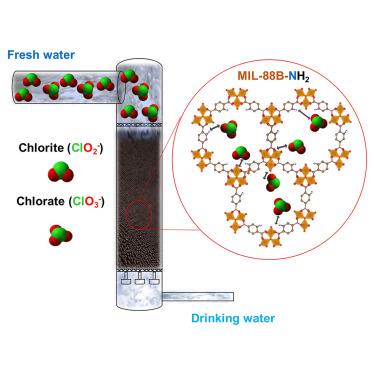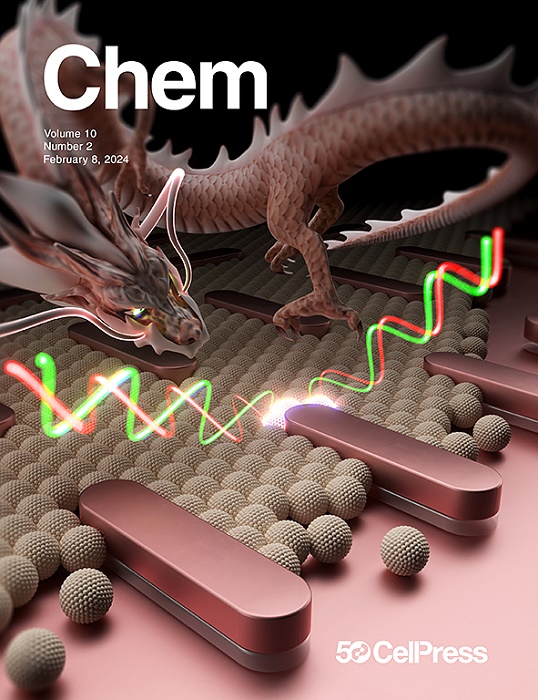Drinking water purification using metal-organic frameworks: Removal of disinfection by-products
IF 19.1
1区 化学
Q1 CHEMISTRY, MULTIDISCIPLINARY
引用次数: 0
Abstract
Water disinfection is one of the most challenging processes for public health. Nevertheless, this process can generate inorganic by-products (chlorite [ClO2−] and chlorate [ClO3−]) associated with human diseases. Recently, the European Union established a permissible maximum concentration of 0.25 mg⋅L−1 for both oxyanions in drinking water; thus, the existing technologies have to be adapted. Here, the earliest use of metal-organic frameworks (MOFs) in the elimination of the disinfection by-products ClO2− and ClO3− from fresh water is presented. Among the Fe-MOFs proposed, the robust MIL-88B-NH2 demonstrated exceptional oxyanions elimination capacities (100% and 30% of ClO2− and ClO3− in 1 and 5 min, respectively). Based on these results, a continuous-flow device based on MIL-88B-NH2 was tested under simulated realistic conditions, achieving high oxyanions elimination capacities, and the reusability of the system was demonstrated. This pioneering work opens new perspectives in the implementation of MOFs in real drinking water treatment plants (DWTPs).


利用金属有机框架净化饮用水:去除消毒副产品
水消毒是对公共卫生最具挑战性的过程之一。然而,这一过程会产生与人类疾病相关的无机副产品(亚氯酸盐 [ClO2-] 和氯酸盐 [ClO3-])。最近,欧盟规定这两种氧阴离子在饮用水中的最大允许浓度为 0.25 mg-L-1;因此,必须对现有技术进行调整。本文介绍了最早利用金属有机框架(MOFs)消除淡水中消毒副产物 ClO2- 和 ClO3-的方法。在提出的铁-MOFs 中,坚固耐用的 MIL-88B-NH2 显示出卓越的氧阴离子消除能力(1 分钟和 5 分钟内分别消除 100% 和 30% 的 ClO2- 和 ClO3-)。在这些结果的基础上,基于 MIL-88B-NH2 的连续流装置在模拟现实条件下进行了测试,实现了较高的氧阴离子消除能力,并证明了系统的可重复使用性。这项开创性工作为在实际饮用水处理厂(DWTP)中应用 MOFs 开辟了新的前景。
本文章由计算机程序翻译,如有差异,请以英文原文为准。
求助全文
约1分钟内获得全文
求助全文
来源期刊

Chem
Environmental Science-Environmental Chemistry
CiteScore
32.40
自引率
1.30%
发文量
281
期刊介绍:
Chem, affiliated with Cell as its sister journal, serves as a platform for groundbreaking research and illustrates how fundamental inquiries in chemistry and its related fields can contribute to addressing future global challenges. It was established in 2016, and is currently edited by Robert Eagling.
 求助内容:
求助内容: 应助结果提醒方式:
应助结果提醒方式:


